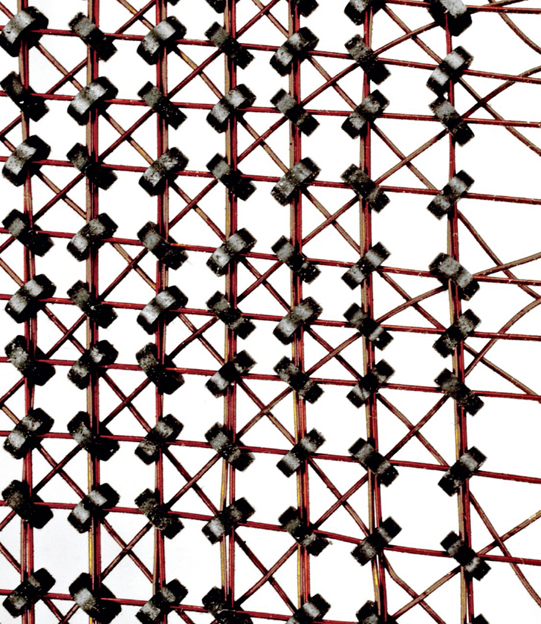1951
Core Memory
An Wang (1920–1990), Jay Forrester (1918–2016)
The first computers didn’t have rewritable memory. Instead, they were “hardwired” to read inputs, perform calculations, and output the results. But it soon became apparent that a rewritable main memory could be used to hold programs, making them easier to develop and debug, as well as data, making it possible for a computer to perform calculations on much larger problems.
Core memory worked by inducing a magnetic field into a tiny magnetic ring, or core. Each core was magnetized in the clockwise or counterclockwise direction, naturally allowing the core to store a single bit. Bits were stored by sending an electrical pulse along a pair of horizontal and vertical wires that crossed at a particular core, with one direction of magnetic flow storing a 0 and the other a 1. A third wire running through each core was used to read what had previously been stored. Core memory had the advantage of remembering its contents even when power was removed. The big disadvantage was that the cores had to be strung by hand into memory systems, which is why core memory was so expensive to produce.
Computer engineer An Wang came up with the basics of how to make core memory work while collaborating with Howard Aiken on the Harvard Mark IV computer; he filed for a patent on the invention in 1949. But Harvard lost interest in computing, so in 1951, Wang left and started his own company, Wang Laboratories. IBM bought the patent from Wang Laboratories for $500,000 in 1956.
Meanwhile at MIT, professor Jay Forrester saw an advertisement for a new magnetic material, realized it could be used to store data, and built a prototype system that stored 32 bits of data. At the time, MIT was building the Whirlwind computer to create the first computerized flight simulator. Whirlwind was designed to use an electrostatic memory system based on storage tubes, but MIT’s engineers hadn’t been able to get the tubes to work. Working with a graduate student, Forrester spent two years and created the first practical core memory system, storing 1,024 bits of data (1 kibibit) in an array of 32 × 32 cores. The memory was installed in Whirlwind in April 1951. That same year, Forrester filed for a patent on an even more efficient technique of arranging cores in three-dimensional arrays. IBM bought that patent from MIT for $13 million in 1964.
SEE ALSO Delay Line Memory (1944), Williams Tube (1946), Whirlwind (1949), Dynamic RAM (1966)
Core memory was developed for MIT’s groundbreaking Whirlwind computer in April 1951.
